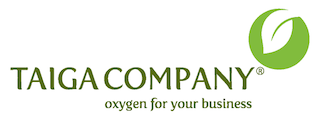6 Ways Top-Flight Brands Build Sustainable R&D Departments
Top brands try to make every aspect of their businesses sustainable, including their R&D efforts. But how do they do this in practice?
That’s what you’re about to find out. We take a look at some of the strategies they use to stay ahead of climate change and environmental degradation while creating products that millions of people want to buy.
Focus On The Long-Term
The first thing you notice about these top-flight companies is their focus on the long term. These brands aren’t just trying to jump on the newest trend but are working towards ultimate goals and final objectives, often decades away.
These companies try to take account of market trends, technology, and environmental concerns when considering their next moves. R&D departments then try to consider these, building a roadmap that looks beyond impressing shareholders at the next quarterly meeting.
Sustainable Integration
Many of these forward-looking R&D departments also look to integrate other “green” elements in their R&D process. For example, many use
eco-friendly materials in their labs or use their industry-leading technology to develop products with minimal environmental impact.
You also see companies designing for recyclability. Firms want to complete the “circle of production and consumption,” reusing more material instead of allowing it to drift into the environment.
Experimental Culture
Top brands also embrace a culture of experimentation. Management understands the value of taking calculated risks and getting employees to work on side projects that might generate high-value returns.
You can see this
approach in many of the leading tech companies. R&D departments often have considerable scope in the projects they can pursue, producing incredible results.
You also see it in bioscience companies trying to define new methods to identify drugs or edit genes. These firms must often just try things to see if they work.
Eco-Conscious Lab Design
You also see the top brands changing how they arrange their laboratories to meet sustainability requirements. For example, instead of using throw-away plastics, many are now exploring using reusable vials or glass that can break down in the ground without causing harm.
We are also seeing the use of more advanced filters above
fume hoods. These prevent unwanted particles from entering the environment and causing harm.
Metrics That Go Beyond ROI
We’re also seeing a lot of these labs exploring the use of metrics that go beyond basic ROI calculations. While return on investment is critical for businesses, many companies are taking less uni-dimensional views, realizing that lab breakthroughs often have consequences beyond what management or the market can perceive immediately.
Alternative metrics could include:
The pace of innovation- Customer satisfaction
- Delivery of eco-sustainable goals
Agile Processes
Finally, many
top brands use agile processes to create high-flying R&D departments that get results. Instead of signing off on big projects every few months, these firms focus on rapid iteration, getting their employees to continually test and adapt their ideas. Some even use customer feedback surveys and funnel these into their decision-making processes when deciding what to pursue next.


